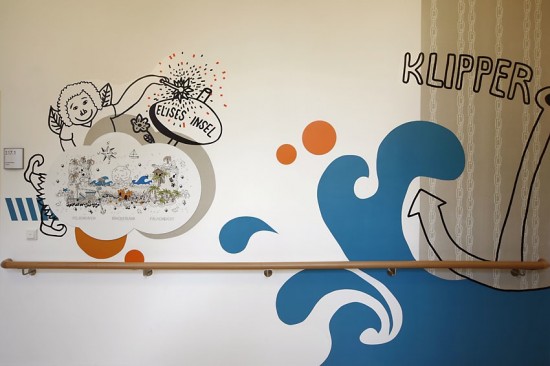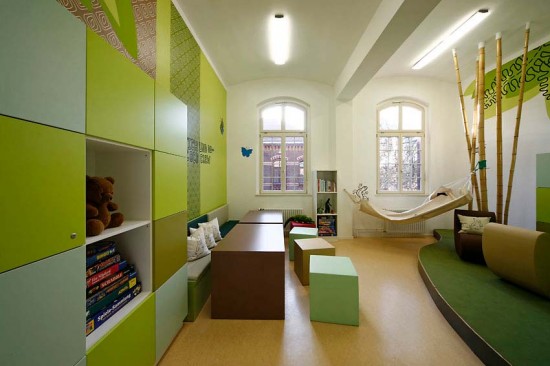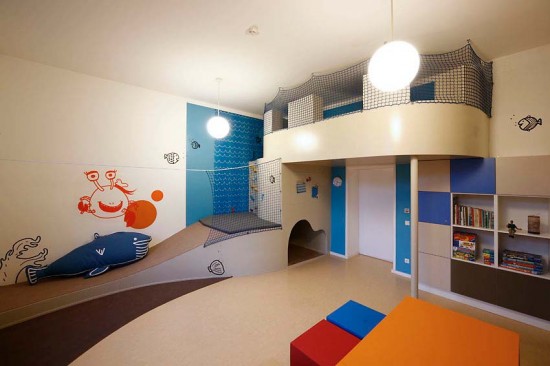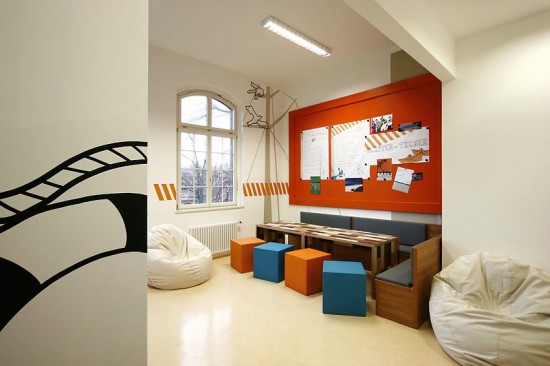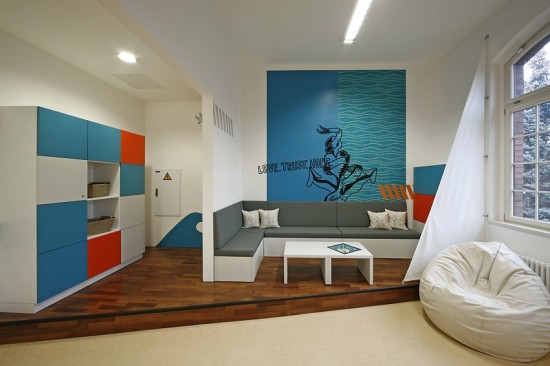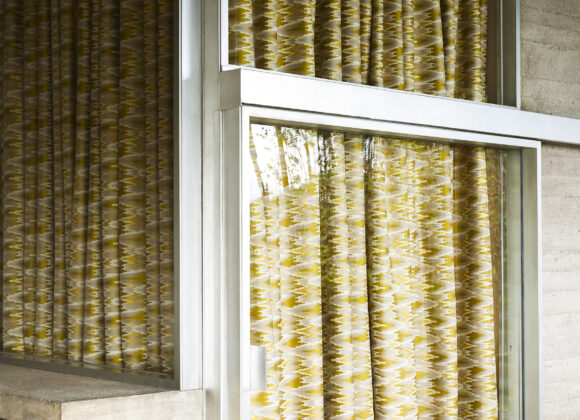The patients of the Department of Child and Adolescent Psychiatry of the ‘Evangelisches Konigin Elisabeth Krankenhaus’ Hospital (KEH) in Berlin will never feel alone again. In addition to doctors and nurses the youngsters are, since October 2009, hosted by Princess Elise. She is the protagonist of the story told to the children when they arrive at the institution: when she was young, Princess Elise invented her own island, with golden sand, palm trees, rocks that kiss the waves and shelters where she could rest when she needed to. Here she was always safe. Now as a grown-up lady, Elise does no longer need to live on the island and therefore dedicated it to her young patients in the hospital. The legend was created and transferred to reality by the German creative agency dan pearlman, who worked closely with the hospital’s psychiatrists and doctors to develop a holistic approach to a new communication and spatial concept. The ‘Isle of Elise’ project is based on a concept where design and architecture play a central role, thus forming a completely new approach to child and adolescent psychiatry.
Each room in the hospital was designed in terms of shape, color, materials, light and air, with the aim of promoting a positive atmosphere of security and shelter, empowering children’s imagination and positive emotions. The new concept meets the demands of young patients and therapeutical staff at the same time. The obligations of therapeutic professionals and the
emotional needs of young patients are now balanced. And the response has been positive: According to KEH psychiatrists and doctors, the young patients are more calm and sensitive and the level of aggression amongst adolescents has been significantly decreased. “The original objectives and the results that we see now fit perfectly,”says Alexander Eberle, project manager of dan pearlman. It is the first time that the agency is involved in a social sphere project. Gathering a group of designers, architects and experts in communication and strategy, the company is generally directed to the development of brands and brand architecture. This time, dan pearlman used its experience to make KEH hospital “shine, with the values and behavior of a brand”. The dan pearlman professionals noted, from the outset, that this perspective on design can be adapted to other scenarios in which the environment influences the development and healing process of the children involved, for example in kindergartens or social institutions. “Companies should engage in social responsibility,” said Alexander Eberle, “The design should not only focus on good looks, but on doing good”.
The ‘Isle of Elise’ project was since the beginning a very important project for dan pearlman due to the fact that children with special needs and problems are involved. Especially since statistical studies indicate a rise in suicidal behaviors, anxiety, eating problems and psychological disorders resulting from abuse or neglect younger children. dan pearlman supported the project and will be pleased to further encourage child-friendly designs and environments.
Design does have to have sustainability. With actual issues such as economic crisis and climate change, among other problems, it is quite obvious that there is a need for improvement for the society we have created for ourselves. At the same time, our world reaches a whole new era of design, creating a new role for companies, with endless opportunities to improve society.
This new role does not substitute traditional ones, but rather works side by side, creating and opening new fields of activities. It gives designers the opportunity to create networks with individual people, enterprises, non-profit organizations, local and global institutions that together generate tangible steps to sustainability and balance. Lets start thinking on how a specific system can be improved using design-thinking as the key. Creativity is an attitude that can certainly be used as a social recourse.


